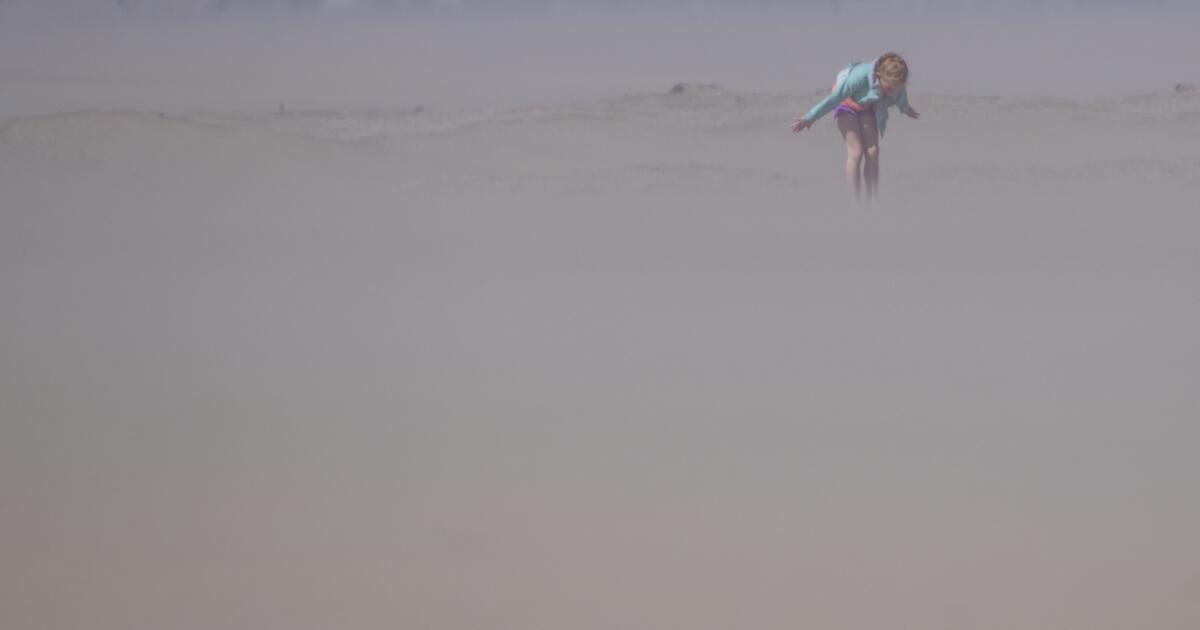For anyone wondering whether intense dust storms, such as the haboob that enveloped Phoenix this week, are possible in Southern California, the answer is yes.
They’ve hit in the recent past and are a growing issue over much of Southern California and the Central Valley, thanks to the drying associated with climate change, water overuse, wildfire, off-roading, tractors on dry soil, and construction, experts say.
In 2022, for instance, there was a massive haboob in the Salton Sea area. The dust from that nighttime storm — with a 3,000-foot-high wall of dust and 60-mph winds — went all the way to Los Angeles.
“It was insane,” said Amato Evan, a climate researcher at UC San Diego’s Scripps Institution of Oceanography. It was so thick that cameras picked it up in Riverside, he said. More sensitive instruments measured the particles all the way from Lake Elsinore to Pasadena and downtown Los Angeles. He said a similar storm occurred in 2023.
Share via Close extra sharing options
Both of these were on the same scale as the one in Arizona this week, but they happened at night and in far less populated areas.
“Dust storms are a widespread air quality problem across California, especially in those areas that are dry and getting drier,” William Porter, a professor of atmospheric dynamics and modeling at UC Riverside, said in an email.
The consequences are potentially serious for human health, experts say, because disease- and chemical-laden particles coat human lungs. The particles also cover solar panels and darken mountain snow, making it melt faster.
It’s a serious enough phenomenon that UC researchers formed a consortium, known as UC Dust. They estimate that more than 55,000 square miles in the state and 5 million Californians are directly affected by dust storms. Evans said they are difficult to forecast, leaving millions of people vulnerable and exposed. Porter agreed.
“We are surprisingly bad at predicting their magnitudes in advance and we know very little about how those dust particles differ in terms of health impacts and other properties based on where they came from,” he said. Porter, also part of UC Dust, said the team is trying to resolve some of these unknowns for better forecasting and to “help make Californians more prepared for their arrival, whenever and wherever they occur.”
The majority of the storms happen in the Salton Sea and Owens and Central valleys, and the Mojave and Sonoran deserts, but their reach is often much greater.
Samples collected from lake records in the Rocky Mountains show dust levels in the last 150 years are six times higher than any period in the last 5,000 years.
The dust can also carry toxic material.
Research has long shown that the fungal spores that cause valley fever tend to grow in disturbed soil and dust. Now studies are showing the particles are often laced with industrial and legacy chemicals, such as pesticides, microplastics and DDT, Evan said.
“There are areas that used to be bombing ranges … so it’s very plausible that there’s arsenic, all kinds of heavy metals, and these legacy pesticides,” he said. “We’re still researching all of this.”
Dust can trigger asthma attacks, as well as other respiratory and cardiac issues. A 2019 survey found that 22% of children have asthma in Salton Sea region — almost triple the national rate of 8.3%.
Dust also decreases visibility on roads and infiltrates engines, motors and other machinery. It can kill crops.
“Have you ever seen plants after a dust storm has gone through? They look like they were burned,” said Evan, explaining that dust acts like sandpaper, abrading the leaves and stems of crop plants.

